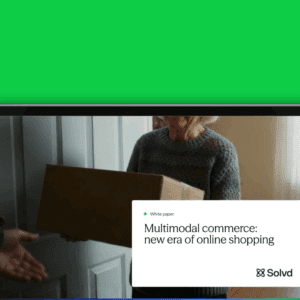
In the midst of the rise of ad blocking services, Facebook has recently made it more difficult for these programs to work on its site. But at the same time, the social network also has made it easier for users to control which ads reach them in their feeds — to the extent of being able to block all ads about cats, or those from specific advertisers.
The RTP team discusses whether Facebook’s decision is marking a decisive shift in the ad blocking “arms race,” and whether retail brands can take advantage of this latest move to make their social media marketing as effective as possible?
Debbie Hauss, Editor-in-Chief: I know I’m not alone in my disdain for the abundance of ads that cross my online view on a daily basis. If I can customize the types of ads I receive I’ll opt for receiving zero ads (and I’m sure I’m not alone in that choice). But participating in the ad preferences process on Facebook takes time and many consumers will just choose to skip that process and simply continue to ignore the ads that pop up — unless Facebook finds a compelling way to motivate consumers to participate. I think brands and retailers need to think about different ways to engage with shoppers and develop relationships, and maybe focus less time and effort on figuring out how to combat ad blocking.
Adam Blair, Executive Editor: Wearing my consumer hat, Facebook’s move to “cripple” ad blocking software on its site actually seems like a pretty fair trade-off. Admittedly, popular types of ad blocking software will be less effective on the social network, but in return we will be able to self-curate the ads that we do see. Users will be able to block ads for, say, pet products (just because you like to look at cat videos doesn’t mean you own a tabby). More ominously for retailers and other advertisers, consumers will be able to more easily identify which marketers are reaching out to them via an email contact list that has been uploaded to Facebook. The plus for advertisers is that they can be more confident that their ads are reaching people who are actually interested in their product categories. The challenge will be on the creative side — to make ads that are content-rich, targeted, and nearly indistinguishable from the other posts and shares that populate users’ Facebook feeds.
Alicia Fiorletta Esposito, Content Strategist: It seems like, for the most part, the RTP staff is on the same page regarding this issue: it’s not just the number of ads that hit us throughout the day, it’s the type of ads we receive. If Facebook lets me have more control over which brands I see ads from and how frequently, that results in me not feeling like I want to pull my hair out! I could imagine it also benefits brands, too. After all, they’re able to ensure that their ads are only going to the most relevant and engaged audiences, which will impact their results. Their performance data is more reliable, so they can better refine their messaging, content, imagery and overall marketing investments. But of course, retailers can’t ignore the new imperative. Regardless of what technology emerges (in this case, ad blocking tech), brands need to focus on creating compelling and relevant ads that truly resonate with their consumers.
David DeZuzio, Managing Editor: Facebook is taking a necessary step to please its advertisers and it makes sense. You can’t charge people big bucks to advertise only to have their ads blocked. However, giving users a choice in what type of advertisements they receive is a stroke of genius. For retailers, they can utilize the stacks of customer data they are collecting, figure out who prefers what and make social media marketing ads based on that data. For example, I could watch cat ads all day. And, if the data finds that 37 million other Facebook users feel the same, a retailer could potentially engage millions of potential customers in a very positive way and be sure their marketing dollars have been wisely spent. So, if it is possible to receive cat-themed ads regardless of the product being sold, I’m in. Cats rolling around on Levi’s jeans? Cool. Cats jumping on bars of Dove soap? Excellent. Cats getting life insurance policies even if they’re smokers? Fantastic. You get it. I guess the point is, if I’m going to receive ads whether I want to or not, they may as well be something I enjoy.
Klaudia Tirico, Associate Editor: Facebook’s new ad preferences are pretty genius if you ask me. While it’s not the best news for ad blockers and users who take them very seriously, I too believe it is the ideal trade-off, as Adam pointed out. As a consumer, I’ve been more accepting of ads on social media, especially on Facebook and Instagram. Many of the ads on my feeds have helped me discover new retailers, brands and products — and this is all before the new ability to curate the ads came to light. I can really see consumers, brands, retailers and advertisers standing behind this new feature. It seems as though it can be a win-win for everyone. Consumers can pick and choose what types of ads they want to see, advertisers will have a better understanding of their most interested audience, and retailers will benefit from the influence the ads have on their valued customers. But as Adam also said, the trick will be to create authentic, content-rich ads that don’t scream “ad!” But I think they’re well on their way to overcoming that challenge.
Glenn Taylor, Associate Editor: No one is ever going to like ads, so if Facebook is going to demand they continue to make revenue on them, then they might as well give the consumers some choice. There are always newer programs and plug-ins that are coded to circumvent these ads anyway, so shoppers at some point will likely be able to seek out their own alternative if they really aren’t thrilled with any of the ads. Facebook is one of the few that actually has a global influence on how advertising is delivered to consumers, making the decision one I can definitely see being carried over to other circles. Considering how so much of daily life now seems to require the ownership of mobile devices, it wouldn’t surprise me if more ads were geared this way so that smartphone users didn’t close every ad immediately. Retailers could tap into these insights to find what kind of fine-tuned advertisements consumers prefer, and try to gamify them so consumers don’t necessarily feel like they are wasting their time when a message pops up.






